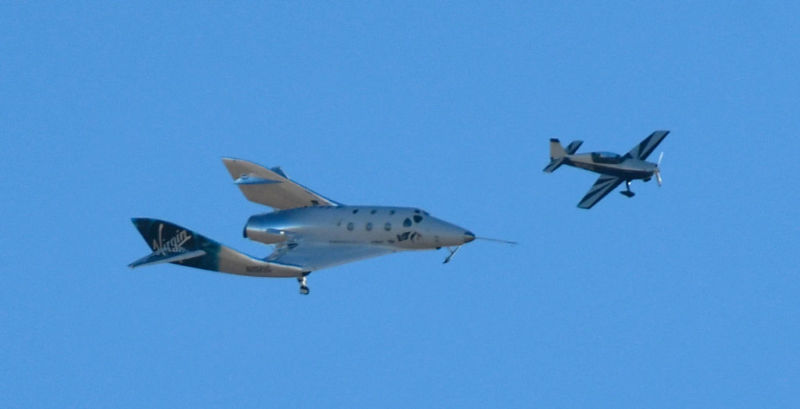
Enlarge / Virgin Galactic’s VSS Unity comes in for a landing after its first suborbital test flight. (credit: GENE BLEVINS/AFP/Getty Images)
Last October, the space tourism company Virgin Galactic, founded by Sir Richard Branson, became publicly traded. After opening at $11.75 a share, the SPCE stock value generally declined, briefly reaching a low just under $7 a share late in 2019.
At around the same time, the company’s chairman, venture capitalist Chamath Palihapitiya, began to talk about developing point-to-point suborbital travel. This advance, he said, would come after Virgin Galactic developed its space tourism business based upon a small rocket-powered spacecraft launched from a large airplane. Such trips, which provide a few minutes of weightlessness, cost at least $250,000 per person. Commercial service may begin in early 2021.
Moving from this technology to a rocket-powered vehicle capable of carrying passengers on long suborbital hops around the world represents a significant step forward. It would involve getting a larger, much more powerful spacecraft to work, making it safe, convincing regulators to allow spaceflights near populated areas, and finally bringing costs down to something that more than a handful of the ultra-wealthy can afford.
Read 7 remaining paragraphs | Comments
Source: Ars Technica – Key US space official says point-to-point space travel a ways off
